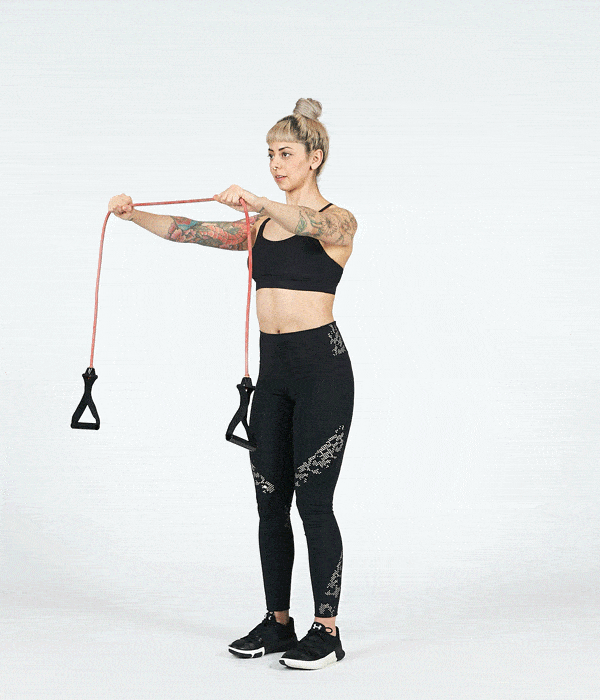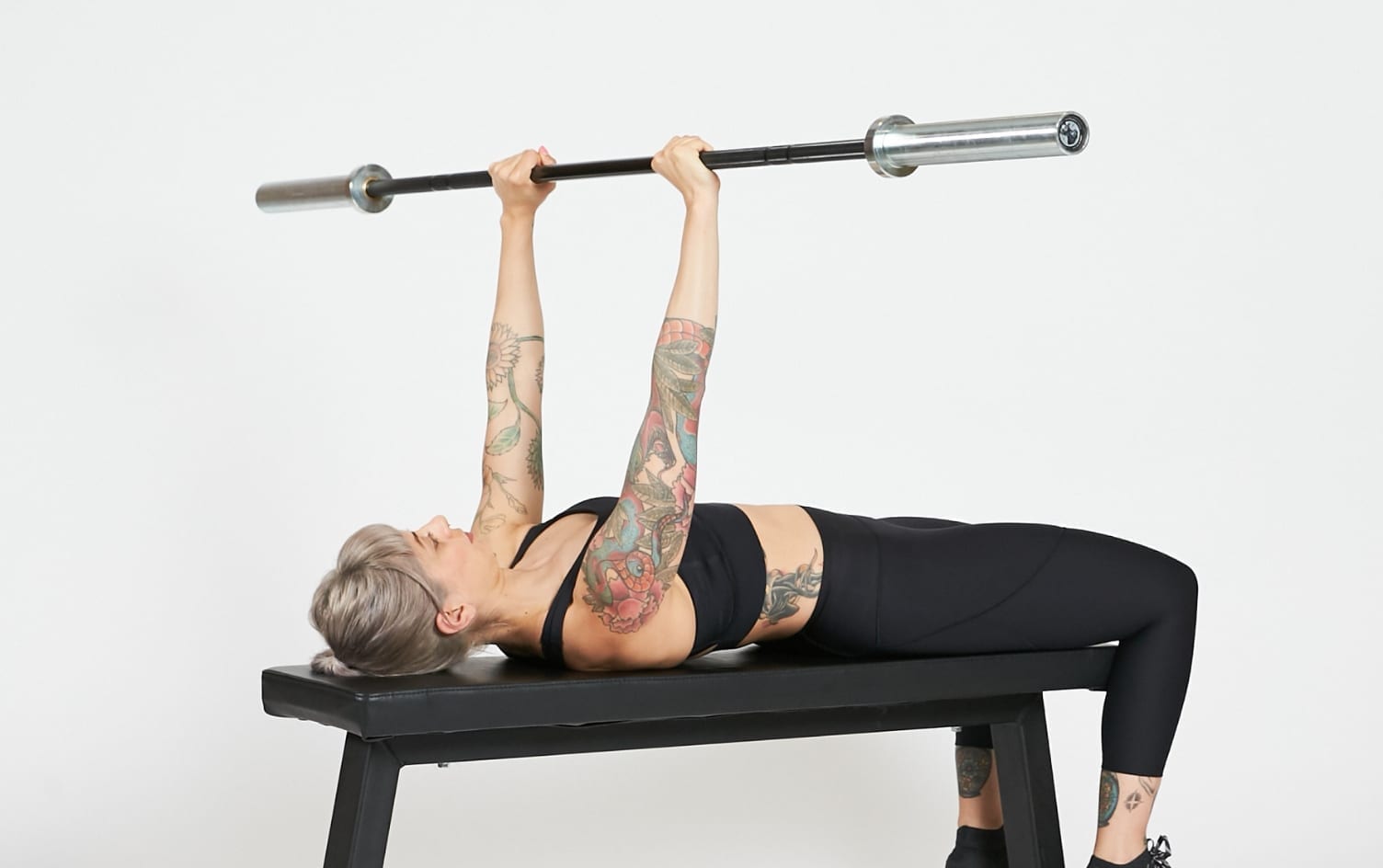The bench press is one of the most classic weightlifting exercises. There’s a good reason it’s stuck around so long: “Presses are one of the basic, foundational human patterns of movement,” explains Greg Pignataro, certified strength and conditioning coach at Grindset Fitness. “Being able to push things or press them overhead is a fairly regular component of everyday life.”
So why bench press over other types of pressing exercises? “Compared to something like the overhead press, the bench press is arguably safer to learn as it doesn’t directly load the spine,” Pignataro says. “It also has greater potential to build the strength and size of the chest and back, two large and important muscle groups.”
Those new to the exercise often struggle to increase the weight they’re using — and veteran bench pressers often deal with pain after doing the movement for many years. No matter your experience level, here’s how to improve your bench press.
WARM UP PROPERLY
“Your warmup for the bench will be much better if it includes band pull aparts,” Pignataro explains.
BAND PULL-APARTS, PALMS DOWN

Grab a long resistance band and hold it in your hands with your palms facing down. Pull the band apart until it touches your sternum, not your upper chest, he advises. Do this 15–25 times.
BAND PULL-APARTS, PALMS UP

Hold the resistance band with your palms facing up and pull the band apart until it touches your sternum, not your upper chest. Do this 15–25 times.
BAND PULL-APARTS, BICEP CURL

Next, do the same thing, but with your arms locked to your sides like you’re doing a biceps curl — again with palms facing up.
“This series of three movements will effectively warm up your pectorals, triceps, deltoids and muscles of the rotator cuff and upper back,” Pignataro notes — all of which you’ll be using in the bench press.
THINK OF THE BENCH PRESS AS A TOTAL-BODY EXERCISE
Most people think of benching as a chest, shoulder and arm exercise. But when you do it right, you actually use much of your body to complete the movement, including your back, hips and glutes.
To use all of those muscles, proper setup is crucial. You want to be in an “active” position right from the start, not just when you’re pressing the bar. “In a properly performed bench press, you’re generating as much force as possible by doing the following before even lifting the bar off the rack: Driving the heels into the ground, squeezing the glutes together and extending the hips, squeezing the shoulder blades together, keeping the wrists straight and gripping the bar as hard as possible,” Pignataro says.
“Failing to do any of these things means your body needs to find an alternate way to generate force, which often means defaulting to a compromised position that puts undue stress on your spine, elbows or shoulders,” he adds. Often, people who have pain while benching can reduce or alleviate it it by thinking of these cues, he says. Even if you don’t have pain, they may help you lift more weight.
IF YOU NORMALLY USE A BARBELL, PRESS DUMBBELLS OCCASIONALLY
“Dumbbells do two things,” says Jesse Lewis, a physical therapist and certified strength and conditioning coach. “First, they force each shoulder to work separately, ensuring there are no strength imbalances between your right and left arm, which can develop when you only do barbell bench press.”
Dumbbell bench presses may also help keep your shoulder health on point: “Dumbbells force your shoulders to work harder to stabilize, so a dumbbell bench press trains shoulder stability more than barbell bench.”
FOCUS ON YOUR FEET
You might not be thinking much about your feet when you bench press, but their positioning is key.
“You want to make sure that they’re placed on the floor, spaced evenly and are in line with each other,” Pignataro says. Doing this may be harder than it sounds. “Many people default to putting one foot noticeably further in front of the other without even being aware of it. This can negatively affect the efficiency of your press by making one side work harder than the other.”
Also, people often lift one leg up off the floor as they reach a “sticking point” in a difficult rep. “This is the last thing you want to do, as it releases the tension you worked so hard to create in your setup,” Pignataro notes. Instead, push through both feet evenly to drive the bar up.
MIX UP YOUR GRIP
Different grips have different effects. For example, a narrower grip increases the load on your triceps.
But are you familiar with the reverse grip bench press? “For this excellent but underutilized exercise, you take a wider grip and supinate your hands, so that when you are gripping the bar, your palms are facing toward your head, not your feet,” Pignataro says. “Touching the bar relatively lower on your torso than a traditional bench press, this variation targets the anterior deltoid (front of shoulders) and clavicular pectoral fibers (upper chest) much more effectively.”
Also, if you have shoulder or elbow pain while benching, Pignataro recommends trying a “football bar,” which allows you to use a neutral grip, with your palms facing each other.




